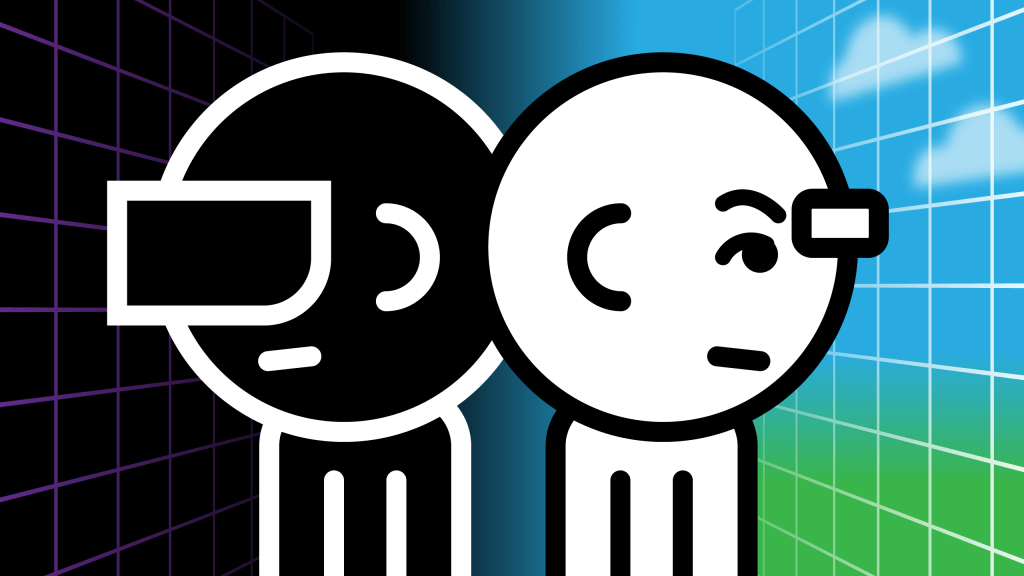

Major technology platforms shift every 10-15 years, with new platforms building on the ones they preceded. The PC was the platform of the early-1980s, then the internet came in the mid-1990s to improve the functionality and connectedness of PCs, then the smartphone emerged in the mid-2000s to put an internet-connected PC in everyone’s pocket.
We’re due for the next major technology platform shift, and artificial intelligence, augmented reality, and virtual reality are those next platforms.
So how do you maximize value creation for the next wave? Here’s our answer:
If you can create an operating system (OS), create an OS. If you can’t create an OS, optimize a component of the new technology platform. If you can’t optimize anything in the new platform, at least disrupt an industry that’s been relatively untouched by technology.
Let’s touch on each of those three opportunities.
Build an OS
If you can build an operating system, build an operating system. We define an operating system as combining core pieces of new technology into a single platform that makes them available to third parties. This is different than the dictionary definition because we don’t see operating systems as purely related to a computer.
We would argue that Google is the OS of the web, combining organic discovery, paid discovery, video content distribution, monetization tools, analytics, etc. If you have a web presence, you must, in some way, touch Google.
Amazon is the leading OS for commerce. They combine proprietary fulfillment, third-party sales, payments, audience driven by a strong brand, etc. If you sell things online, you should consider doing it through Amazon. Facebook is a social OS. They combine the social graph, news feed, video/live video, messaging, targeted promotion, etc. If you want to build services that connect people with one another in some way, you should do it through Facebook. And, of course, iOS and Android combine a camera, a touchscreen, GPS/location, an accelerometer and internet access, and offer ways for third-party developers to distribute their software (app stores).
Owning the OS layer has historically been the path to the greatest returns during technology platform shifts. Apple, Google, Microsoft, Amazon and Facebook all have market caps over $400 billion as of this writing, making them some of the biggest companies in the world.
We expect those five companies are going to spend more than $50 billion in R&D this year and $5 billion-plus will go toward the development of AI/AR/VR “OSes.” Thus, owning an OS in the new computing paradigm is hard and highly competitive. Everyone knows how much value there is in owning the OS layer. It’s why Facebook paid $2 billion for Oculus when it was just a developer kit — a shot at owning the OS for virtual reality. It’s also why private companies like Magic Leap have had so much venture interest regardless of valuation — a shot at owning the OS for augmented reality. If they succeed, the returns will be substantial.

Optimize a new technology component
If you can’t build an OS, optimize a component of the new technology platform. Snapchat and Uber are two examples of this type of opportunity from the smartphone shift. Snapchat optimized the smartphone camera, making it more fun and engaging. They created disappearing messages, stories and lenses to enhance the content that users could create. They built a culture around fun and natural content.
Facebook has since followed in opening up the camera to developers at this year’s F8. Uber built a business that optimized the GPS/location component of the smartphone. The purpose of a map is to get somewhere. Uber optimized this intent, creating a logistics platform that paired users looking for a ride given a specific location with nearby drivers. Beyond Snapchat and Uber, Dropbox optimized file sharing, Spotify optimized music consumption, Stripe optimized payments, Slack optimized communications for business, etc.
The interesting thing about optimizing a component in a new technology platform is that it can open the window to create an operating system: Combining core technologies and making them available to third parties. Now Snapchat is experimenting with hardware like Spectacles, which may be an early experiment in creating an AR OS. You could argue that Uber is building a transportation OS getting into food and other delivery segments, as well as autonomous vehicles.
Considering the AR/VR piece of the next major technology shift, most component optimization is still focused on cameras/optics. This is logical because AR requires cameras to map the real world and overlay useful content and information. High-quality VR experiences will also require cameras to read the real world so you can move more freely in the virtual one.
Sound seems to be an area that is underinvested. Next to vision, sound is the most important element for sense immersion. Sound and language processing are also important in AI as interfaces increasingly incorporate voice. Hearables will be just as important to the computer interface of the future as head-mounted displays — and more important than watches.
Another underappreciated technology component for AI/AR/VR is braintech. We see the evolution beyond headset-based AR and VR being delivered through some sort of direct brain interface. The challenges of doing this in a noninvasive way are obvious, but the benefits to the experience are just as apparent.
There are technical limitations to how well we can trick the eyes, ears and other sense inputs as to the reality of AR and VR creations. Bypassing sense inputs means that we can move past pixels and haptic frequencies and into neuronal firing patterns. In the near term we see braintech as enhancing AR and VR experiences, but long-term braintech may be the next major operating system to emerge.

Disrupt an industry untouched by technology
If you can’t optimize a piece of the next technology stack, at least disrupt an industry relatively untouched by technology. Uber did this in tandem with optimizing a piece of the tech stack by changing how the taxi industry operated. Airbnb did this for unused real estate, WeWork for office space, SoFi for loans and financing and Oscar for health insurance.
We think there are many industries that have yet to be significantly disrupted by technology. There are a lot of industries that could fit into this category, but three major ones where we’re spending time are real estate, brick and mortar retail and education.
While real estate marketing has been transformed by the internet, the way salespeople and brokers are paid is still legacy. Because of the availability of listings online, the job of real estate professionals has changed, but the way they are compensated has not.
We expect the way that real estate is purchased will be different in the next 10-20 years, driven by AI/AR/VR displacing real estate professionals. The company or companies that capture the value currently accrued to agents and brokers has a chance to be at the scale of the Airbnbs and WeWorks of the world.
Brick-and-mortar retail has suffered because of the rapid shift to online shopping. Online currently represents XX percent of total U.S. commerce, but we see it reaching 55% over the next several decades. While the selection, convenience and price of online shopping are major factors in the shift, the way we shop in offline stores is largely unchanged over the past several decades. That browsing experience is the same.
We might use our phones to find coupons, locate a product in store or for rewards, but there is little technology injected to the overall shopping experience itself. We think that finding ways to leverage customer data to deliver customized shopping experiences, combined with hiring and training employees to personalize the experience, is the future of brick-and-mortar retail.
Professional education has gotten better through technology products like Udemy and Coursera, but the way K-12 students are educated has not seen meaningful impact from technology. The biggest barrier is the politics of working with local, state and federal governments, combined with limited budgets. We see the future of education in external courses, not government-supplied ones, because open platforms allow the best teachers to teach at scale. Knowledge is a commodity, but motivation is rare and accreditation is where the value lies.
AI can help keep students motivated by customizing courses based on speed of learning and relative weaknesses, while AR and VR can make learning more immersive and interactive. Moving away from our legacy school system will be difficult given unions and political nearsightedness, but a better system can emerge if we allow it.
While we think those three industries will see great disruption through the next tech wave, there will obviously be great businesses in tech-forward spaces like entertainment and gaming. They just might not be the game-changing types of companies with rare valuations like Uber, Airbnb and WeWork.

We’re always looking
There are a lot of factors that go into making venture investments. Team, theme, market, doing something non-incremental, etc. We think understanding where the product or service fits in this hierarchy is equally important.
The framework helps us put into context the relative rarity of a company creating something at the OS layer, the opportunities in optimizing specific parts of the technology platforms of the future and what industry segments are ripest for innovation. So the mantra applied to us is:
If we can invest in a great team building a potential OS layer, we will. If we can’t find OS-layer companies, we’ll look for ones that are optimizing components of the computing platforms of the future. If we can’t find those companies, we’ll look for companies disrupting an industry that desperately needs it. And if we can’t find that, we’ll keep looking.
[“Source-ndtv”]

